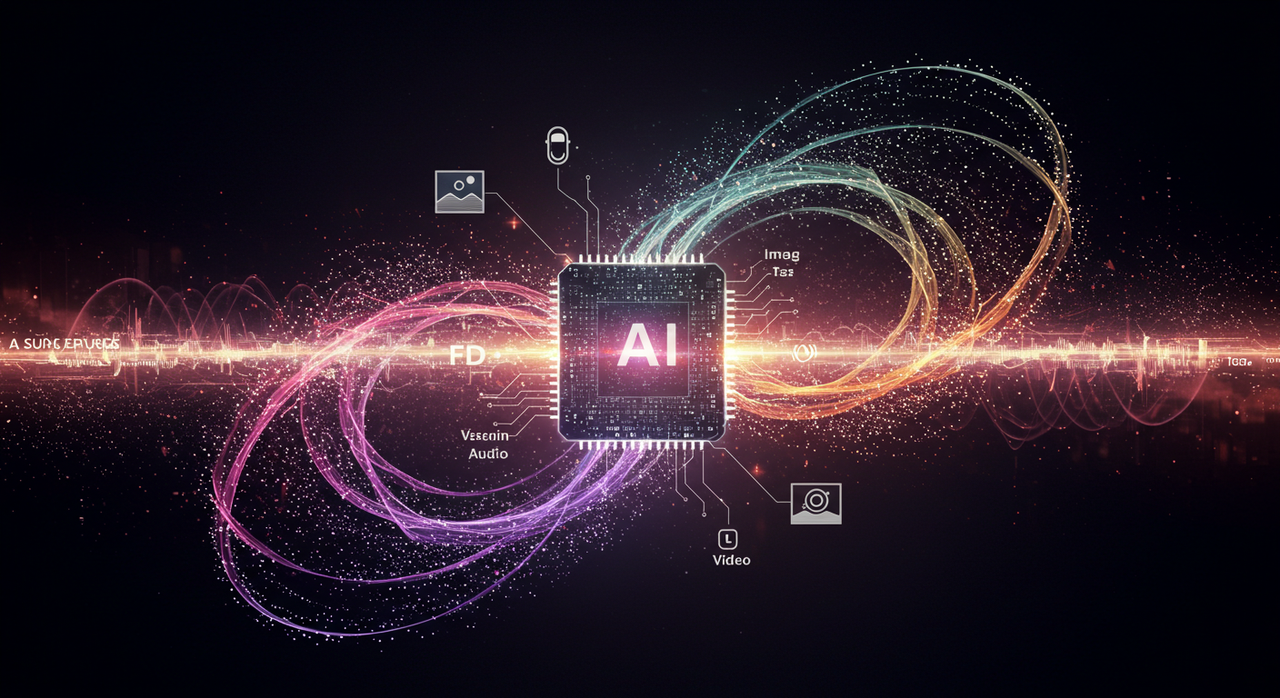Generative AI, the fascinating field of artificial intelligence focused on creating new, original content from learned patterns, is experiencing a period of rapid and transformative advancement. From crafting realistic images and generating human-quality text to composing music and designing novel materials, the capabilities of these models are expanding at an astonishing pace. Staying abreast of these developments and understanding their wide-ranging implications is crucial for individuals, businesses, and society as a whole.
Key Advancements Shaping the Generative AI Landscape
The past year has witnessed several pivotal breakthroughs that are pushing the boundaries of what generative AI can achieve:
- Improved Model Architectures: Innovations in neural network architectures, particularly the continued evolution of Transformers, are leading to more contextually aware and coherent outputs. Models like the latest iterations of GPT (Generative Pre-trained Transformer) and Google’s Gemini AI demonstrate enhanced reasoning, understanding of complex prompts, and the ability to process and generate across multiple modalities like text, code, audio, images, and video simultaneously.
- Multimodal Mastery: A significant trend is the rise of multimodal AI. These models can process and generate content across different data types. For instance, models can now generate images from text prompts with remarkable detail and coherence (Stable Diffusion, Midjourney, DALL-E), create short video clips from text descriptions (Google’s Lumiere), and even understand and respond to combinations of text, audio, and visual inputs (OpenAI’s GPT-4V). This opens up exciting possibilities for more intuitive and versatile AI applications.
- Enhanced Realism and Fidelity: Generative AI is producing increasingly realistic and high-fidelity outputs. In image and video generation, the line between AI-created and human-generated content is becoming increasingly blurred. This has significant implications for creative industries, entertainment, and virtual reality.
- Democratization and Accessibility: Advancements in computing power and the development of user-friendly tools and APIs are making generative AI more accessible to a wider range of developers and creators. Platforms and open-source projects like Hugging Face’s Transformers, TensorFlow, and PyTorch are lowering the barrier to entry and fostering innovation. The emergence of startups like DeepSeek, which developed competitive AI models with relatively minimal investment, challenges the notion that AI development requires billions of dollars, further democratizing the field.
- Personalization at Scale: Generative AI is enabling new levels of hyper-personalization across various sectors. By analyzing vast amounts of data, AI can tailor content, products, and services to individual user preferences and needs, leading to more engaging and relevant experiences in areas like education, marketing, and customer service.
- AI for Science and Research: Generative AI is proving to be a powerful tool for scientific discovery. It can assist in tasks like generating novel drug candidates (Insilico Medicine), designing new materials, summarizing research papers, and even accelerating the process of protein and molecule selection.
- Human-in-the-Loop Integration: Recognizing the importance of ethical considerations and practical application, there’s a growing emphasis on Human-in-the-Loop (HITL) approaches. This involves integrating human input into the training and refinement processes of generative AI models to ensure alignment with ethical standards, cultural sensitivities, and real-world needs.

Far-Reaching Implications Across Industries and Society
The rapid advancements in generative AI are poised to have profound implications across numerous sectors:
- Creative Industries: Generative AI is transforming content creation, offering tools for generating text, images, music, and videos at unprecedented speed and scale. This can boost productivity, enable new forms of artistic expression, and personalize content for individual consumers. However, it also raises questions about copyright, the role of human artists, and the potential for the mass production of synthetic media.
- Marketing and Sales: Generative AI can create hyper-personalized marketing content, automate repetitive tasks like keyword research and content formatting, enhance customer interactions through AI-powered chatbots, and optimize omnichannel strategies for improved engagement.
- Software Development: AI can assist developers by generating code snippets, translating between programming languages, and even helping to identify and fix bugs, potentially increasing efficiency and accelerating the development process (GitHub Copilot).
- Healthcare and Pharmaceuticals: Generative AI is accelerating drug discovery, personalizing treatment plans, generating medical reports, and even creating synthetic medical images for training diagnostic models. This holds the potential to revolutionize healthcare and improve patient outcomes.
- Finance: AI can generate personalized investment recommendations, analyze market data, detect fraud, and automate the creation of financial documentation.
- Education: Generative AI can personalize learning experiences, create tailored educational content, and provide intelligent tutoring systems.
- Manufacturing: AI can optimize designs, predict maintenance needs, and improve supply chain efficiency.
- Customer Service: AI-powered chatbots with enhanced natural language processing capabilities can provide more human-like and effective customer support.
Beyond specific industries, generative AI also carries broader societal implications:
- Ethical Considerations: As AI-generated content becomes more realistic, concerns around misinformation, deepfakes, and the potential for misuse are growing. Issues related to bias in training data, lack of transparency in model outputs, and copyright infringement need careful consideration and the development of ethical guidelines and regulations.
- Job Displacement: The automation potential of generative AI raises concerns about job displacement in certain sectors, particularly those involving routine content creation or data processing tasks. However, history suggests that automation can also lead to the creation of new roles and opportunities.
- Environmental Impact: Training large generative AI models requires significant computational resources and energy, leading to concerns about their environmental footprint and the need for more energy-efficient hardware and sustainable practices.
- Trust and Verification: The increasing difficulty in distinguishing between human-generated and AI-generated content can erode trust in information sources and necessitate the development of methods for content authentication and verification.

Navigating the Future of Generative AI
The latest advancements in generative AI present both immense opportunities and significant challenges. To harness the transformative potential of this technology responsibly, it’s crucial for individuals, organizations, and policymakers to:
- Stay Informed: Continuously learn about the latest developments, capabilities, and limitations of generative AI.
- Develop Ethical Frameworks: Establish clear ethical guidelines and regulations to address issues like bias, misinformation, and intellectual property.
- Invest in Education and Reskilling: Prepare the workforce for the changing demands of an AI-driven economy by investing in education and reskilling programs.
- Promote Transparency and Explainability: Encourage the development of AI models that are more transparent in their decision-making processes.
- Foster Collaboration: Encourage collaboration between researchers, developers, policymakers, and the public to navigate the societal implications of generative AI.
The journey of generative AI is still in its early stages, but the recent advancements signal a future where AI plays an increasingly significant role in shaping how we create, communicate, and interact with the world around us. By understanding these advancements and proactively addressing their implications, we can strive to unlock the full potential of generative AI for the benefit of humanity.
What are your thoughts on the latest advancements in generative AI and their potential impact? Share your perspectives in the comments below!

